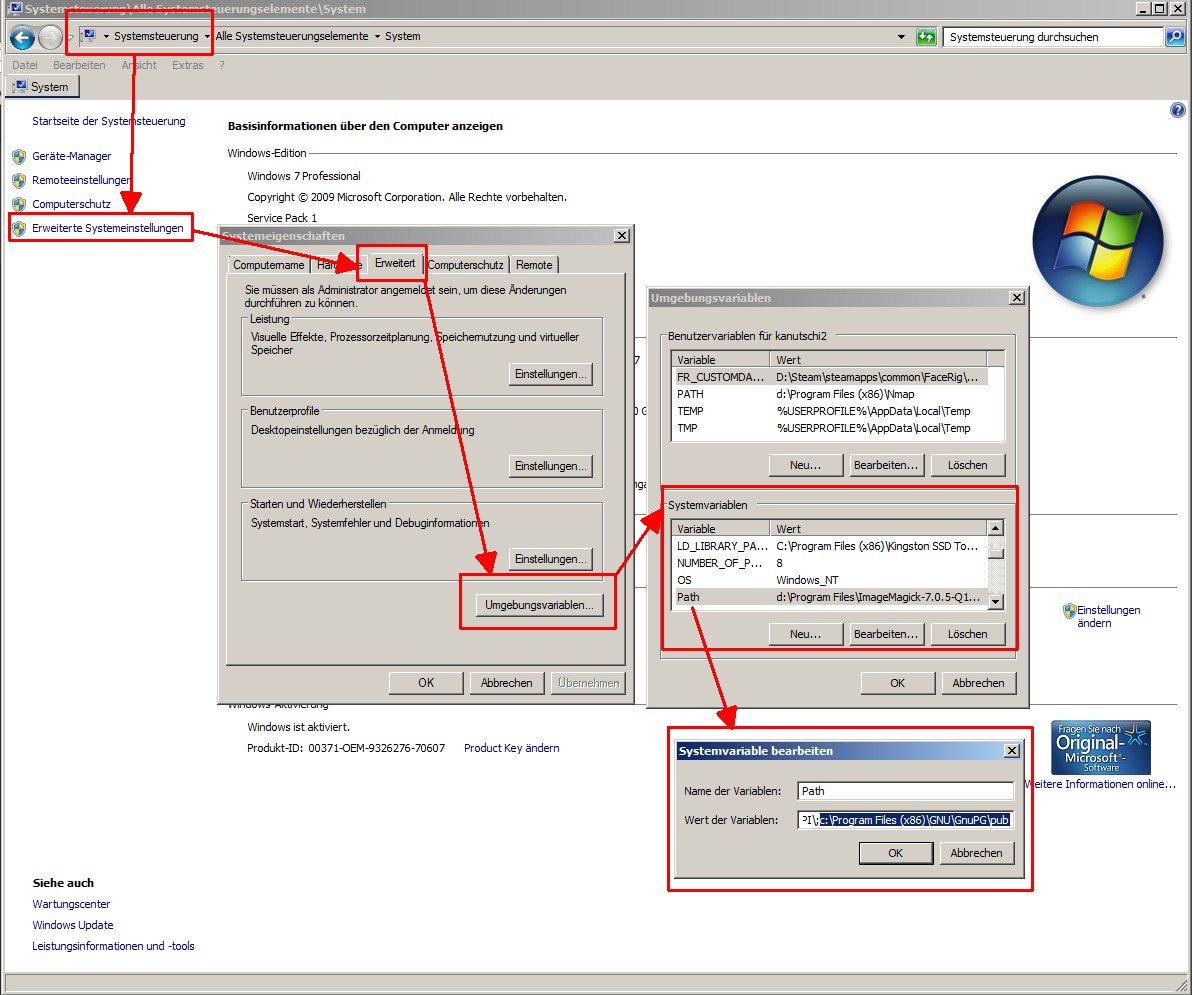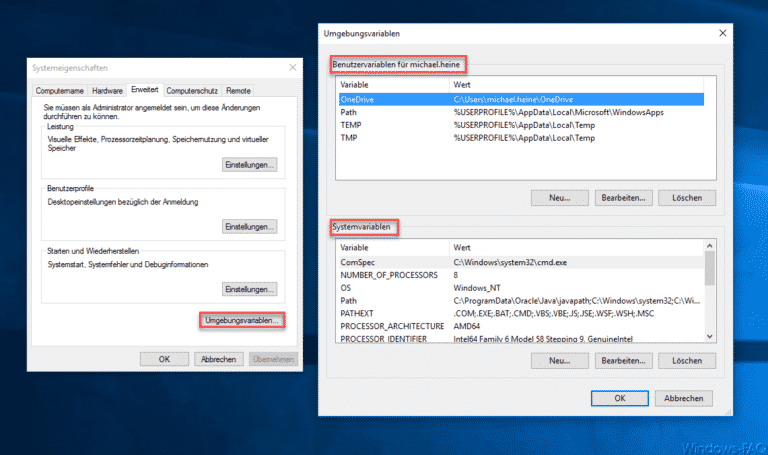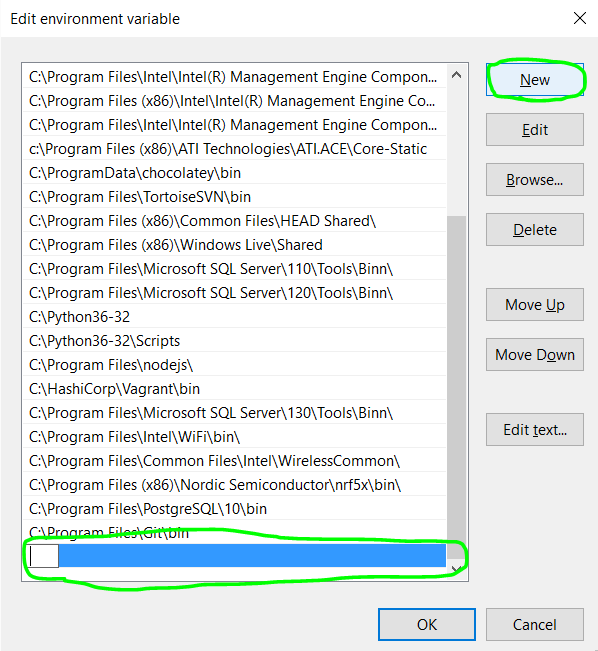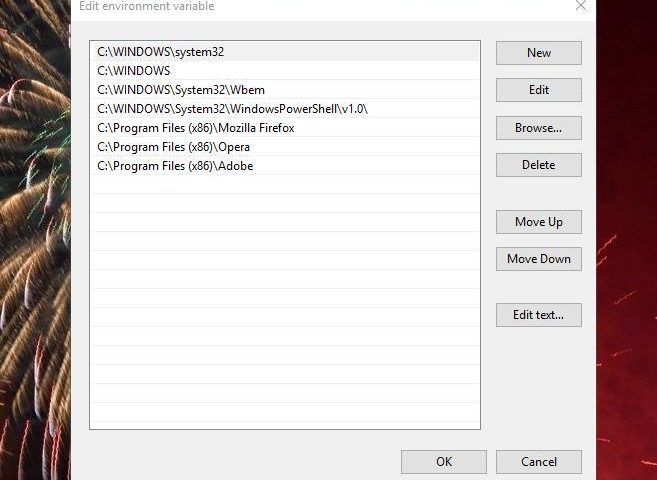Where is the path variable stored in Windows 10?
Table of Content
If it cannot be found in the current directory, the operating system checks for the address in the PATH variable. Apart from the above two methods, environment variables are also generally used in the batch and PowerShell scripts.That is all. If you like this article, you might also like the list of app URI commands and how to check PowerShell version in Windows 10. In the Environment Variables window , highlight the Path variable in the System variables section and click the Edit button. Add or modify the path lines with the paths you want the computer to access. Each different directory is separated with a semicolon, as shown below.

Tap on the entry you want to remove to select it and hit the Delete button on the right. On older versions of Windows, you can click the Edit text button and delete the recent PATH entry for the Variable value text field. In System Properties, tap on the Advanced tab and click the Environment Variables button at the bottom.
How do I edit the PATH variable?
On the Edit environment variable dialog, you’ll see a list of all the paths that are currently in the PATH variable. As you can see, Node.js and Git already added their paths so that I can run Git commands and Node.js commands from anywhere while in the command prompt. Right click the Computer icon on your desktop and choose Properties from the menu. Click on the Advanced system settings link and then click Environment Variables. Under the section System Variables, select the environment variable you want to edit, and click Edit.

In the File Explorer, type the environment variable in the address bar and press Enter. As you can see, I’ve used %USERPROFILE% to open my home folder. I had missed to mention %systemdrive% environment variable which is equivalent of %homedrive% mentioned by Alex. Please do give me your feedback on this if you find anything incorrect. This can also come in handy if you have multiple versions of the same command in different paths and need to have one run instead of the other.
How to set the path and environment variables in Windows
%USERPROFILE%A special system-wide environment variable found on Windows NT and its derivatives. Its value is the location of the current user's profile directory, in which is found that user's HKCU registry hive . These variables also do not need to be explicitly specified as command line arguments. %OS%The %OS% variable contains a symbolic name of the operating system family to distinguish between differing feature sets in batchjobs. %OS% always holds the string "Windows_NT" on the Windows NT family.

$LANG, $LC_ALL, $LC_...$LANG is used to set to the default locale. For example, if the locale values are pt_BR, then the language is set to Portuguese and Brazilian practice is used where relevant. Different aspects of localization are controlled by individual $LC_-variables ($LC_CTYPE, $LC_COLLATE, $LC_DATE etc.). $LC_ALL can be used to force the same locale for all aspects.
Install Oracle 19c Database On Windows 10
Note that you can also move items up and down on the list. When you type a command at the command prompt, Windows has to search through each directory stored in the PATH variable to see if that executable exists or not. If you want your executable to be found faster, just move that path up to the top of the list.
So, if you’d like to set PATH for a program permanently—such that it persists even after rebooting the PC—you need to use the setx command. For this, first, fire up Command Prompt with administrator privileges. To do this, hit the Windows + X shortcut key to open the Power User Menu and select Command Prompt from the available options.
What is the path command?
Open a new command-prompt window and test your program by typing in the name of the executable you want to launch. It won’t work in the current window since it’s still using the old PATH variable. Open a Command Prompt window (Win⊞ + R, type cmd, hit Enter). This should output the path to your Java installation folder. %LOGIN_NAME%This pseudo-variable returns the user name.
The following tables shows typical default values of certain environment variables under English versions of Windows as they can be retrieved under CMD. %ALLUSERSPROFILE% (%PROGRAMDATA% since Windows Vista)This variable expands to the full path to the All Users profile directory. This profile contains resources and settings that are used by all system accounts.
Setting this to "ON" has the same affect as adding /P to commands supporting it . Click the New button to add new paths or edit to modify the existing path. You can skip steps 1 to 3 and directly open "System Properties" by pressing Windows+S to open the search menu and typing "environment", and pressing open. Adding a directory to your path makes it possible to run programs from the command line without typing the full path. Keep in mind that some of the variables mentioned are not location-specific, including %COMPUTERNAME%, %PATHEXT%, %PROMPT%, %USERDOMAIN%, %USERNAME%. Oh, also it allows lazy quoting, which I found useful, even when spaces are in the folder path names, since it wraps all of the arguments as if it was one long string.

%$LENGTH%Used by DOS Plus to define the screen length of the console in lines. See also the related environment variables %$WIDTH% and %DIRSIZE% as well as the similar pseudo-variable %_ROWS%. %DIRCMD% (supported since MS-DOS 5.0 and PC DOS 5.0, also supported by ROM-DOS)Allows a user to specify customized default parameters for the DIR command, including file specifications.
%HOUR%This pseudo-variable returns the hours of the current time in 12-hour format without leading zeros, f.e. %AM_PM%This pseudo-variable returns the ante- or post-midday status of the current time. The returned string depends on the locale-specific version of DR-DOS, f.e.
Consequently, they are neither listed by SET nor do they exist for external programs to read. %PATH%This variable contains a semicolon-delimited list of directories in which the command interpreter will search for an executable file that matches the given command. Environment variables that represent paths may be nested within the %PATH% variable, but only at one level of indirection. If this sub-path environment variable itself contains an environment variable representing a path, %PATH% will not expand properly in the variable substitution. PATH is an environment variable on Unix-like operating systems, DOS, OS/2, and Microsoft Windows, specifying a set of directories where executable programs are located.
In Unix, an environment variable that is changed in a script or compiled program will only affect that process and possibly child processes. The parent process and any unrelated processes will not be affected. Similarly, changing or removing a variable's value inside a DOS or Windows batch file will change the variable for the duration of COMMAND.COMor CMD.EXE's existence, respectively.
The command SET displays all environment variables and their values. Set can also be used to print all variables whose name begins with a given prefix by giving the prefix as the sole argument to the command. In Unix and Unix-like systems, the names of environment variables are case-sensitive. Use the following command to check the environment variables set on your PC.
Comments
Post a Comment